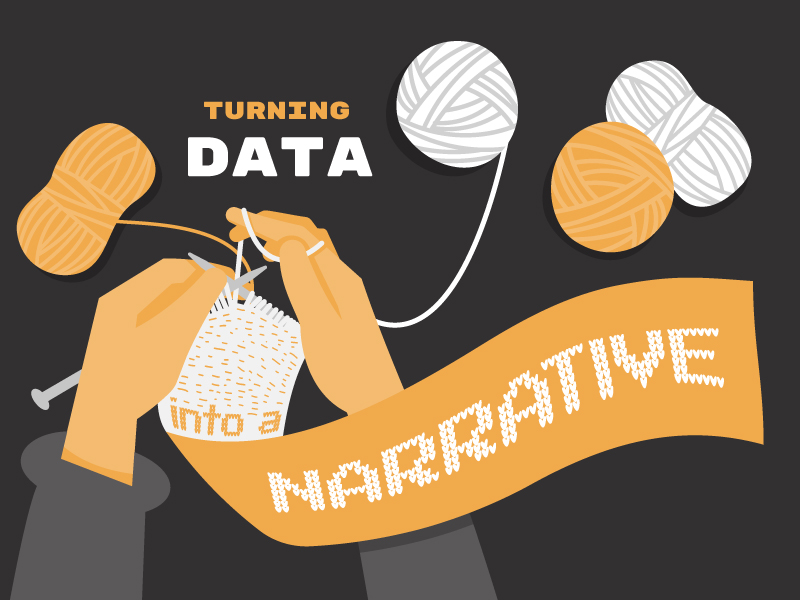Everyone likes stories. They’re hardwired into the human brain to deliver pleasure. One of our strongest suits as a research agency, if not our USP, is our ability to tell stories. As a company founded by journalists, we like to pride ourselves on it.
But, let’s face it. On the face of it, research data is not the most enticing of subjects. As far as we know, there has never been a Hollywood blockbuster based around some kind of spreadsheet which saved the world.
Spreadsheets can seem dull. However when we look at a spreadsheet, we see the data as material which can be woven, spun or knitted into something completely different and brilliant.
This isn’t easy, so here’s a few tips:
1. Know The Story You Want To Tell
This doesn’t mean knowing the results of the research in advance. It means having an idea of what you want the final product to be discussing. If you have an idea, research that idea – and even if the results prove the opposite – it’s a talking point.
2. Look At The Data In Depth
Our research is presented in easy to read PowerPoint slides and the aforementioned spreadsheets. There’s a lot of information in them so say you’re doing a consumer research survey about whether people like eating cabbage soup. Don’t just look at the overall answer to the question (30 percent say “yes”). Find out if young people slurp down more cabbage soup, whether women gulp it down in buckets and which city is the cabbage soup capital of the world.
3. Do The Splits
There are many ways to look at data. You should not be afraid to split questions out and break them by one another. So if you are doing a consumer research survey about cabbage soup and you find people who are allergic to cabbage – you could look and see how many of them still love cabbage soup. And do any of them risk their health to eat it? And you know what? There will almost certainly be some and we can already tell you they’d make a fascinating breakout box in your cabbage soup report.
4. Don’t Be Scared
As we said, there may be results which don’t fit your narrative. Don’t run away from these. These are almost always interesting and readers respect transparency. Say people believe cabbage soup is delicious but makes them fat – you can publish this – and then counter it with the truth from a nutritionist. This builds trust.
5. Make It Snappy And Break It Up
There’s a time and a place for 30,000 word academic articles about an issue related to your product. And we can guarantee that that time and place is not in the literature you are publishing. Keep it as short as possible. And don’t make it acres and acres of text. It’s much better to have a lot of subheadings, data visualisations and pictures of knitting.
Of course, if you want to ask us our opinion, or pay us to write the report or in particular if you’re a Hollywood executive who wants to make a film about a spreadsheet, get in touch at info@perspectusglobal.com
